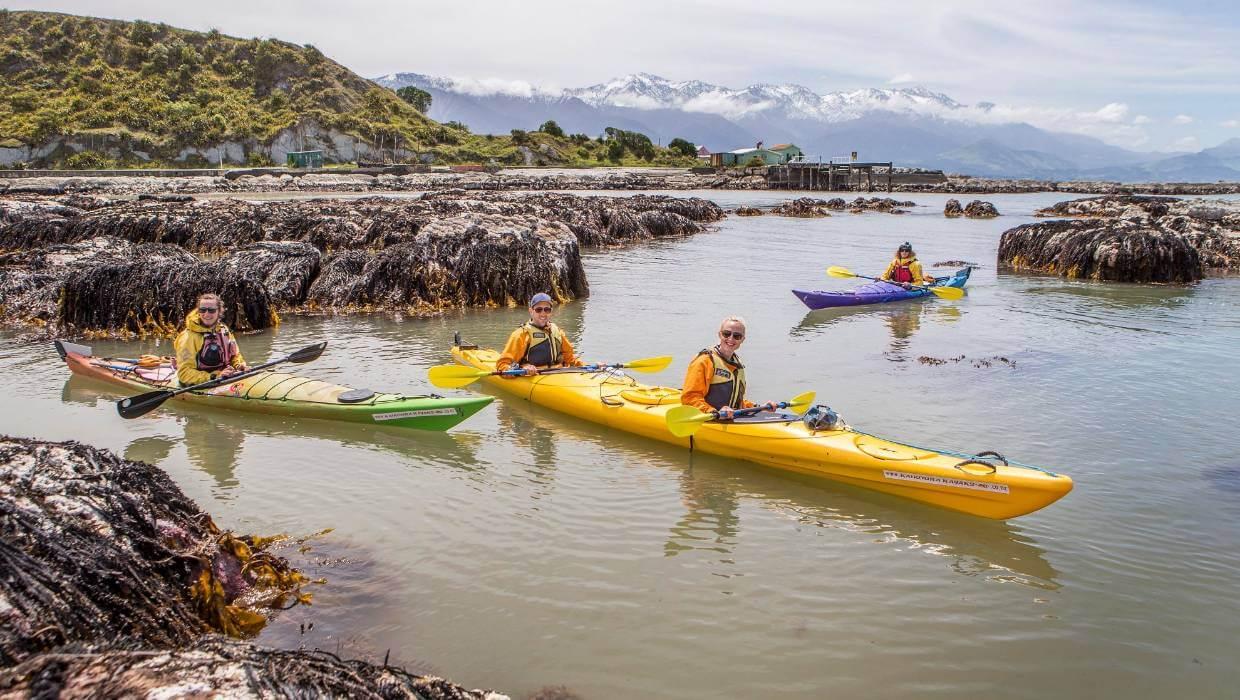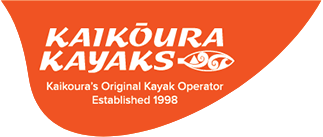
Just after midnight on the 14th of November 2016 Kaikōura was hit by a magnitude 7.8 earthquake that has been described as the most complex ever studied.
Ruptures occurred on multiple fault lines and our community was completely cut off from the rest of New Zealand.
Around the Kaikōura Peninsula the seabed and coastline had risen up to 2 metres and we were unable to kayak the inshore paddle routes as they were now exposed reef. North of Kaikōura the coastline had risen up to 6 metres.
Tourism was hit hard at the start of a promising season, with no visitors to the area and the cash flow completely stopped the future looked pretty grim for operators in Kaikōura.
Kaikōura Kayaks was the first operator back out on the water guiding tourists while rediscovering the new coastline.
We felt as soon as we had managed the new risks, it was important to start a tourism movement as quickly as possible.
The simple nature of our business and adventurous spirits of our staff helped get Kaikōura Kayaks back up and paddling within 4 days of the devastating 7.8 Earthquake.
Conner Stapley and Matt Foy days later also discovered the Hope Springs, the incredible new attraction found in the shallow waters of Whalers Bay of the Kaikōura Peninsula.
It is believed the bubbles were caused by the 7.8 earthquake.
https://www.youtube.com/watch?v=rKy7YgVMPUc
Matt and Conner were out on a recky ( reconnaissance ) paddle around South Point into Whalers Bay too see if there were any changes to the coastline and check on marine life after the quake.
Conner saw some bubbling on the water surface in Whalers Bay and yelled out to Matt "What is that?" "We paddled over and it looked like someone had turned on a spa pool from underneath with a very strong smell of sulphur as well."
Dr Matthew Hughes of Canterbury University says the bubbles are likely dissolved gases in the sea floor which have become exposed by new cracks in the rock which has opened up around 50 metres from the shoreline and exposed carbon dioxide which is causing bubbles to rise to the surface.
The bubbles are a combination of several different gases, but the strong smell likely comes from hydrogen sulfide.
Dr Hughes says it is a "magical little silver lining" for the tourist town.
The name 'Hope Springs' was created by Conner Stapley and Matt Foy for 3 reasons; Conner's daughter is named Hope, the Hope Fault that lays underneath which could be contributing to the bubbles and also 'New Hope' for Kaikōura after the 7.8 earthquake which rocked the community.
"I believe, it's going to be a new attraction for tourists in Kaikōura" Matt Foy.


